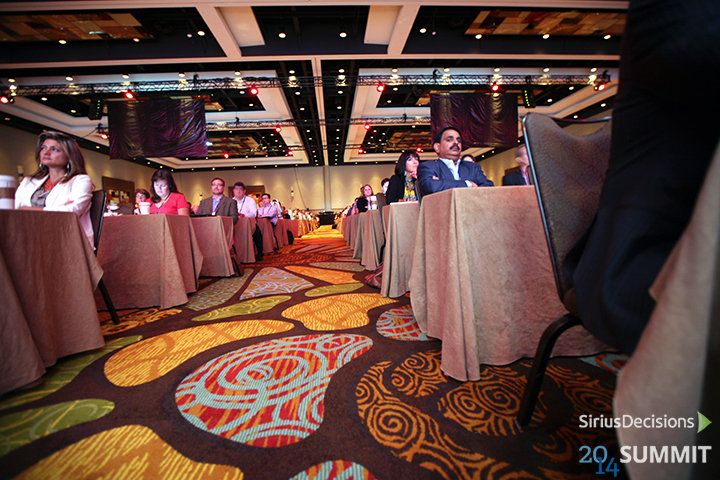Metrics That Matter: Event Performance
- B2B organizations spend a significant portion of their marketing budgets on events
- Many organizations don’t know how their events are performing because they have no standards to quantify their value
- SiriusDecisions recommends applying a core group of metrics to understand return on event spend
B2B organizations spend a significant portion of their marketing budgets on events – from staffing to logistics to promotion. Let’s also not forget the opportunity cost of focusing the team’s effort on the event vs. alternative marketing tactics.
Many organizations, however, don’t know how their events are performing because they haven’t established standards to quantify the value of the event. Most of these same organizations don’t have access to metrics from data-driven methods and instead rely on the quantity of captured business cards and anecdotal information from booth staff to judge whether the event was a success.

So, how do organizations move from anecdotal information and lead capture counts to data-driven methods for understanding event performance?
First, SiriusDecisions recommends applying a core group of metrics to understand return on event spend. These metrics depend entirely on the goals of the event. Next, we suggest that event goals be clearly communicated to each stakeholder and participant. This ensures that proper expectations are set to help shape the overall strategy, event-specific tactics and budgetary resources to match the goals.
There are four campaign program families to which events may be aligned: reputation, demand creation, sales enablement and market intelligence. Each plays a different role and requires specific performance metrics.
Here are examples of metrics to consider within each of the program areas:
Reputation. Reputation pertains to social followup, including the tone of the followup, sentiment change vs. competition, awareness for key concepts, uplift in ideal inquiry rates, media/analyst impact and brand loyalty improvement.
Demand creation. With demand creation, suspects are identified, inquiries are generated, ready-to-transition leads are identified, and leads are converted into opportunities.
Sales enablement. This includes the amount of demos, number of meetings, opportunities created, pipeline velocity increased and deals closed.
Market intelligence. Market intelligence is measured by the total number of targets participating, the number of interviews conducted, the quality and completeness of feedback and messaging effectiveness.
Finally, an important element to consider when reporting on event metrics is time. For example, acceleration of late-stage opportunities might be measured within a quarter following an event, but demand creation efforts in the early buying cycle stages may be measured over a period of six to 12 months. Certain metrics may be measured in day-long or week-long timeframes, for example, reputation goals like mentions, referral traffic and analyst or press articles.
